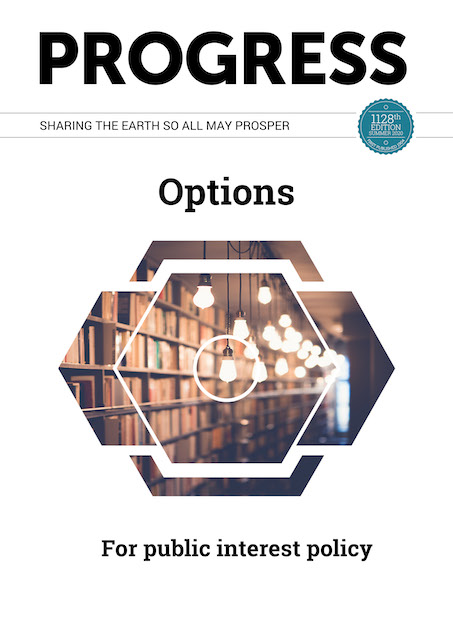The 1128th edition of Progress Magazine is now available online. Here is the editorial.
Dear supporters,
At the 2019 Prosper AGM, members passed the motion to remove section 17 from the constitution requiring the production of four editions of Progress per year. The decision was made in light of the digital era, where our online work receives a far wider audience. More of our time will be now be available to produce suitable content for the modern era. The executive have no desire to halt production of the magazine and look forward to continuing the proud tradition of Georgist analysis in these pages.
Progress will therefore be produced biannually from this point onwards.
This edition features cutting edge research to assist your interpretation of reality. Tim Helm’s report on Stamp Duty to Land Tax was recently written up by Adam Creighton (The Australian). Read that excellent piece via here, then dip into this report summary, providing the most detailed work we have done on overcoming the political hurdles to this vital reform. The findings have led to high level presentations around the country.
Regular Renegade Economists listener and Western Sydney University Emeritus Professor Jane R.Goodall has just released a new book The Politics of the Common Good. She ties an eloquent thread between indigenous land rights, the commons and Henry George in this selection.
Cameron Murray’s latest academic paper Time Is Money: How Landbanking Constrains Supply breaks through the developer spin. For too long the property lobby’s urban sprawl forever = “affordability’s only option” has reigned supreme. We are confident this paper, highlighting the disparity between so-called theory and actual practice, will be a game changer. Prepare to understand Options Pricing Theory. It makes much more sense than the perfect information, perfect ethics basis of current land supply theory.
This is all the more important to grasp when the Victorian Government’s Urban Development Report has quantified that all growth areas have over 15 years’ land supply. Fifteen is the magic number in terms of planning aims and thus affordability potential. No growth area has less than 19 years of land supply. In fact Hume and Melton have 53 years, with it averaging across growth areas at 29 years. So there should be twice as much land as needed to deliver on affordability.
The recent release of the ABS National Accounts revealed total Australian land prices have fallen by $275bn in 2018-19. In comparison to the Global Financial Crisis, this correction was more than double the worst of those years, when in 2011-12 land prices fell $133.5bn. But according to the media, you’d have no idea this occurred. That’s primarily because most of these losses haven’t been realised – homeowners have been able to hold onto their homes as employment levels hold up. Despite this, affordable housing feels like a mile away as Victoria’s First Home Buyers Stamp Duty Discounts have crunched prices under the $600K threshold. Similar stories can be found around the nation. So instead of speculators pushing prices higher, young buyers have been asked to put a price floor under the market.
Karl Williams’ Geoists in History covers Franz Oppenheimer, the German political economist who forged ahead with the belief that liberty could be best maintained with land rents in lieu of taxation.
In notable news, UK economist Josh Ryan-Collins, best known as the co-author of Rethinking the Economics of Land and Housing, presented in Melbourne and at Parliament, Canberra. He said:
“Textbook banking theory focuses on lending to productive business. This must be updated to recognise the increasing dominance of real estate lending as the primary operation of banks. The combination of such loans and limited land tax leads to a dangerous mix, resulting in falling ownership levels and financial instability.”
Read the 1128th edition of our Progress Magazine.
Delve into past recent editions.



